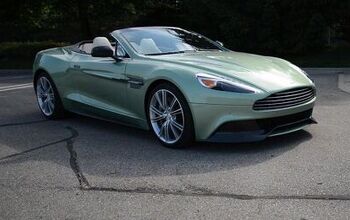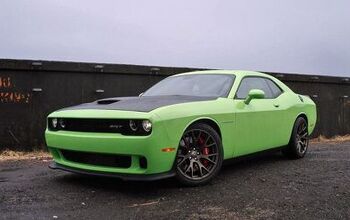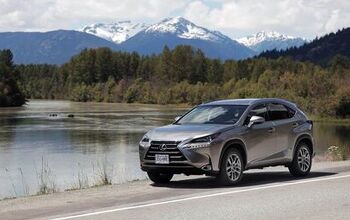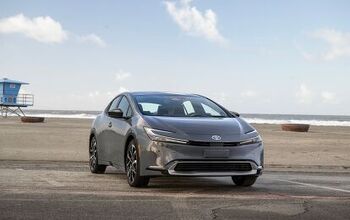2015 Lexus NX Review

In the automotive world, customer’s tastes are fickle. What’s hot today will be shunned tomorrow. Currently, it’s the premium compact crossover that’s all the rage. Consumers are snatching these high-riding five-door hatchbacks up as if they are free iPads. Every luxury auto manufacturer wants a piece of the profitable pie and this year has already seen the introduction of the Lincoln MKC and the Mercedes-Benz GLA.
FAST FACTS
| Engine: 2.0T 4-cylinder makes 235 hp and 258 lb-ft of torque. Hybrid powertrain offers 194 total hp. |
| Transmission: Six-speed automatic or CVT. |
| Fuel economy: 300h FWD rated at 35/31 MPG city/highway. 200t FWD rated at 22/28 MPG. |
| Price: TBA. |
But one brand was oddly absent from this segment until now: Lexus. Finally arriving late to the party, it’s a bit of a head scratcher why Toyota’s premium brand waited so long to introduce the NX compact crossover since the company’s mid-size RX crossover absolutely dominates its segment.
SEE ALSO: 2014 Lexus LF-NX Turbo Concept: First Look Video, 2013 Tokyo Auto Show
Based on a modified version of the Toyota RAV4 platform, the NX is 104.7 inches long and 73.6 inches wide. That is a few inches longer than the compact Toyota crossover but exactly the same width. For the North American market, the NX will be available as the 200t and the 300h hybrid.
New Turbo for Lexus
The 200t will use an all-new 2.0-liter turbocharged direct injection four-cylinder gasoline engine, a first for Lexus. Using a twin-scroll turbocharger designed in-house by Toyota, the new engine produces 235 hp and 258 lb-ft in the NX. That is more power than the boosted 2.0-liter found in the Audi Q5, but less power than the turbos found in the BMW X3 and Lincoln MKC. We have a feeling that this engine will make more power when it’s adopted for future applications within the Lexus family.
Even with its modest output, Lexus claims the roughly 4,000-lb NX will accelerate from 0-60 in seven seconds flat with the optional all-wheel drive (AWD) system or slightly slower when equipped with front-wheel drive (FWD). This seems optimistic as the vehicle doesn’t feel that swift. The engine goes about its business with no drama, but feels merely adequate. Those looking for a little more visceral feedback will want to opt for the F Sport model. The engine doesn’t make any more power, but there is a turbo noise knob by the driver’s right knee that can be adjusted to fill the cabin with turbocharged engine sound effects. Sadly though, the sounds are synthesized.
A Familiar Hybrid with a Twist
If better fuel economy is more important than power, there is the NX 300h. It adopts Lexus’ Hybrid Drive system with a 154 hp 2.5-liter Atkinson-cycle engine paired to a 141 hp electric motor. It’s basically the same system as found in the ES 300h, but makes a little less power in this application with the combined maximum output pegged at 194 hp. Unlike the NX 200t that uses a conventional six-speed automatic, the 300h adopts a continuously variable transmission (CVT).
Like the 200t, there is an all-wheel drive option for the 300h. However, unlike the conventional all-wheel drive system that splits power front and rear through a differential in the 200t, the 300h has an extra 67 hp electric motor shoved under the cargo floor that powers the rear wheels. Total system power is not altered with the all-wheel drive system, but straight line performance remains the same while traction in slippery conditions improves.
SEE ALSO: 2015 Lexus NX Revealed With Turbo and Hybrid Engines
Fuel economy for the FWD hybrid is pegged at 35 MPG in the city and 31 MPG on the highway, while the NX 200t FWD receives lower ratings of 22 MPG city and 28 MPG highway. Opt for the all-wheel drive models and fuel economy drops slightly for both models.
Comfort, Not Sport
The NX is available with either 17- or 18-inch wheels, with F sport models receiving slightly wider, performance-orientated tires. Despite Lexus’ efforts to position this crossover as a sportier vehicle, it really isn’t. Everything it may lack in outright sportiness, it makes up in comfort.
The NX has an uncanny ability to soak up imperfections in the road with the kind of composure a much larger vehicle should. Of course, the cabin is quieter than an awkward first date as the NX does a fantastic job isolating occupants from outside interference.
No Doubt it’s a Lexus
From the outside the NX is instantly recognizable as a Lexus. Just as Lincoln grafted the companies signature split wing grille onto the MKC crossover, the front fascia of the NX integrates Lexus’s now ubiquitous spindle grille. A pair of LED headlamps, fog lamps, and daytime running lamps surrounds the grille. The rear of the NX features more LEDs in the tail lamps, which are arguable the coolest design features of the vehicle.
Like most other Lexus vehicles on the market, there will be the previously mentioned F Sport editions that include a mesh grille, revised front bumper, machined aluminum wheels, black exterior mirrors, unique interior trim, paddle shifters and sport seats.
Fresh, but Average Interior
Inside, the NX is all about comfort. The front seats are designed with a low hip point for an improved driver position as well as increased headroom. Both the regular and sport seats are very comfortable and support you in all the right areas. Lexus has also added soft knee pads at the base of the center stack to provide some cushion for resting legs. After a long day of driving, I felt zero fatigue or soreness behind the wheel of the NX.
The NX is the first Lexus to offer a wireless charging tray than can recharge Qi compatible phones. This is also the first application of the new Lexus Remote Touch Interface touch pad that works similar in operation to a smartphone and replaces the mouse-like infotainment controller. NX F Sport models receive a G force sensor and boost meter. While it might be unnecessary in a crossover, it keeps with the industry trend toward making premium crossovers look sporty.
Abundant Rear Seat Space
Lexus paid extra attention to the rear seats ensuring adult passengers will fit comfortably. Officially rated at just 36.1 inches of legroom, the NX feels far more spacious in the back than those numbers would suggest and is one of the roomier compact crossovers I’ve sat in.
The downside to the large rear seat is a somewhat small trunk that only offers 17.7 cubic feet of storage space. But, thanks to the large back seat, total cargo room grows to 54.6 cubic feet when the rear seats are folded down, which can be done remotely with the optional power fold seat. Those who opt for the hybrid NX will suffer a slight loss in cargo space the hybrid equipment with 16.8 cubic feet while the rear seats up and 53.7 cubic feet with them folded down.
As should be expected in this market segment, the NX is available with all the latest safety equipment like a pre-collision system, adaptive cruise control, blind spot monitoring, rear cross traffic alert and lane departure warning.
The Verdict
The compact crossover market is getting crowded, but Lexus is hoping the NX will follow in the RX’s footsteps and become a runaway sales success. Even if the NX isn’t particularly sporty and offers an interior that feels class average, it does have a lot going for. Passenger comfort and space are top notch and the NX offers more refinement than some of its key competitors. Pricing for the NX is yet to be announced, but if it is class competitive as has been hinted, that may ultimately be the largest deciding factor in the NX’s overall success. Regardless, the NX is just one more compelling offering in a crowded segment that is red hot right now.
LOVE IT
- Comfort
- Space
- Refinement
- Hybrid option
LEAVE IT
- Average interior
- Could use more power
- Small hatch

A 20+ year industry veteran, Mike rejoins the AutoGuide team as the Managing Editor. He started his career at a young age working at dealerships, car rentals, and used car advertisers. He then found his true passion, automotive writing. After contributing to multiple websites for several years, he spent the next six years working at the head office of an automotive OEM, before returning back to the field he loves. He is a member of the Automobile Journalists Association of Canada (AJAC), and Midwest Automotive Media Association (MAMA). He's the recipient of a feature writing of the year award and multiple video of the year awards.
More by Mike Schlee































Comments
Join the conversation